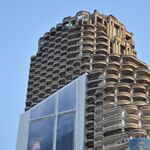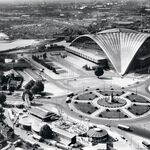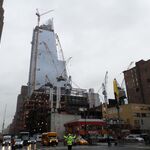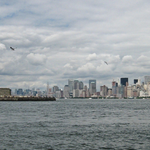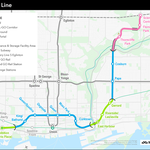In 2014, exactly 40 years after the last streetcar made the journey from El Paso, Texas, to Juarez, Mexico, El Paso City Council voted to restore streetcar service to city streets, thus kickstarting one of the biggest transit reinventions in recent memory. With the laying of tracks already underway — along with the requisite traffic snarls and civic wrangling that appear to be part and parcel of any such project — El Paso is well on its way to once again being a North American leader in the ongoing light rail renaissance that has taken root over the last decade. This edition of Once Upon a Tram will therefore take a look at both the historic legacy and exciting future of what began in 1882 as the El Paso & Juarez Streetcar Line.
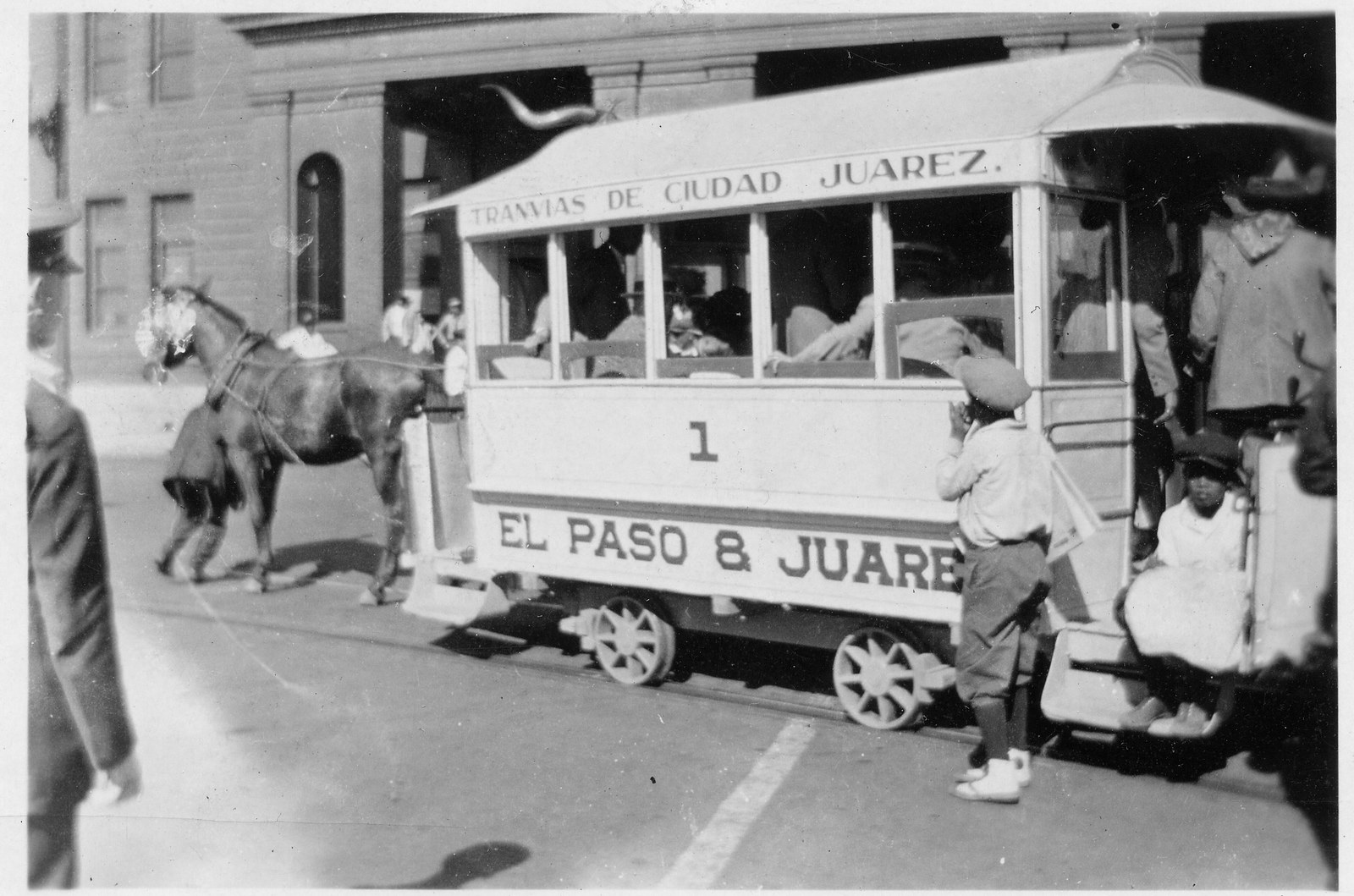 El Paso & Juarez mule-drawn streetcar, c. 1880s, public domain archival image
El Paso & Juarez mule-drawn streetcar, c. 1880s, public domain archival image
Beginning with the arrival of the railroad to El Paso in 1881, the population grew from 761 to 1,500 within the first month of operation, and the West-Texas boomtown ballooned to just over 10,000 by the time of the 1891 census. Anticipating the coming population growth, the mule-drawn El Paso & Juarez Streetcar Line, owned and operated by the El Paso Railway Company, went into service in 1882. This first line brought passengers to and fro between the United States and Mexico, and was followed by the eventual addition of several routes within El Paso's city centre.
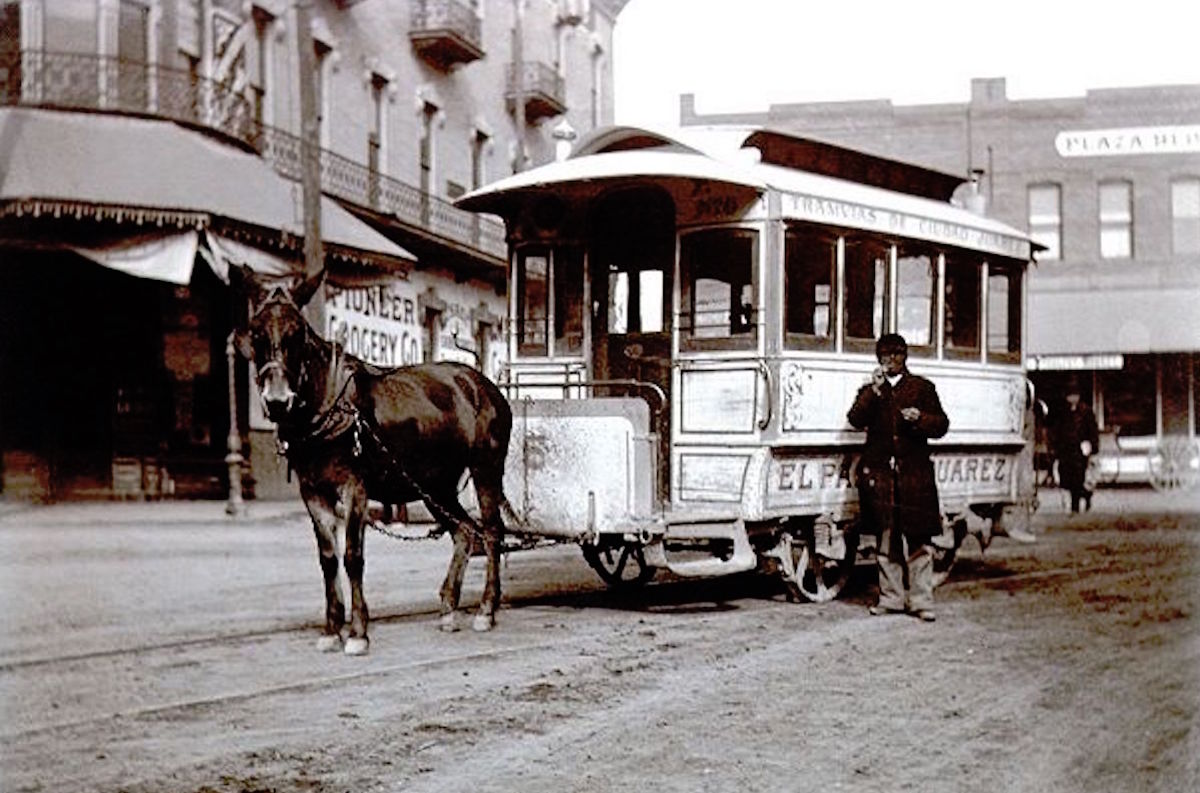 El Paso & Juarez Streetcar Line, waiting for passengers, c. 1880s, public domain archival image
El Paso & Juarez Streetcar Line, waiting for passengers, c. 1880s, public domain archival image
In 1889, the International Light and Power Company was issued a charter to operate in El Paso, bringing electricity to the city and leading to the eventual electrification of the El Paso Railway Company's streetcar network. The mule-drawn service phased out gradually, and finally came to an end with the retirement of Mandy the Mule in 1901. Seen below, the archival map of El Paso from 1886 depicts the city just prior to the arrival of mass electrification, the only power then introduced to the city hugging the heavy rail corridors. Those with a keen eye will note the inclusion of several mule-drawn streetcars, along with the twin bridges across the Rio Grande which linked El Paso to Juraez, and enabled what would ultimately become the only such internationally operated streetcar network in North America.
 1886 Map of El Paso, Texas, depicting mule-drawn streetcars and twin bridges to Juarez, Mexico, public domain archival image
1886 Map of El Paso, Texas, depicting mule-drawn streetcars and twin bridges to Juarez, Mexico, public domain archival image
Within El Paso, the electric streetcar network was gradually expanded to include a handful of urban routes, including the popular Oregon Street Line, which carried passengers through the commercial heart of the city, as well as the original El Paso & Juarez Line, which remained the most popular route throughout the system's 92-year history. The unique existence and operation of an international streetcar line was essential for the local economies of both El Paso and Juarez, with families, shoppers, and scores of migrant workers making heavy use of the line, thus sustaining its run for more than 20 years past the end of streetcar service throughout the rest of downtown El Paso.
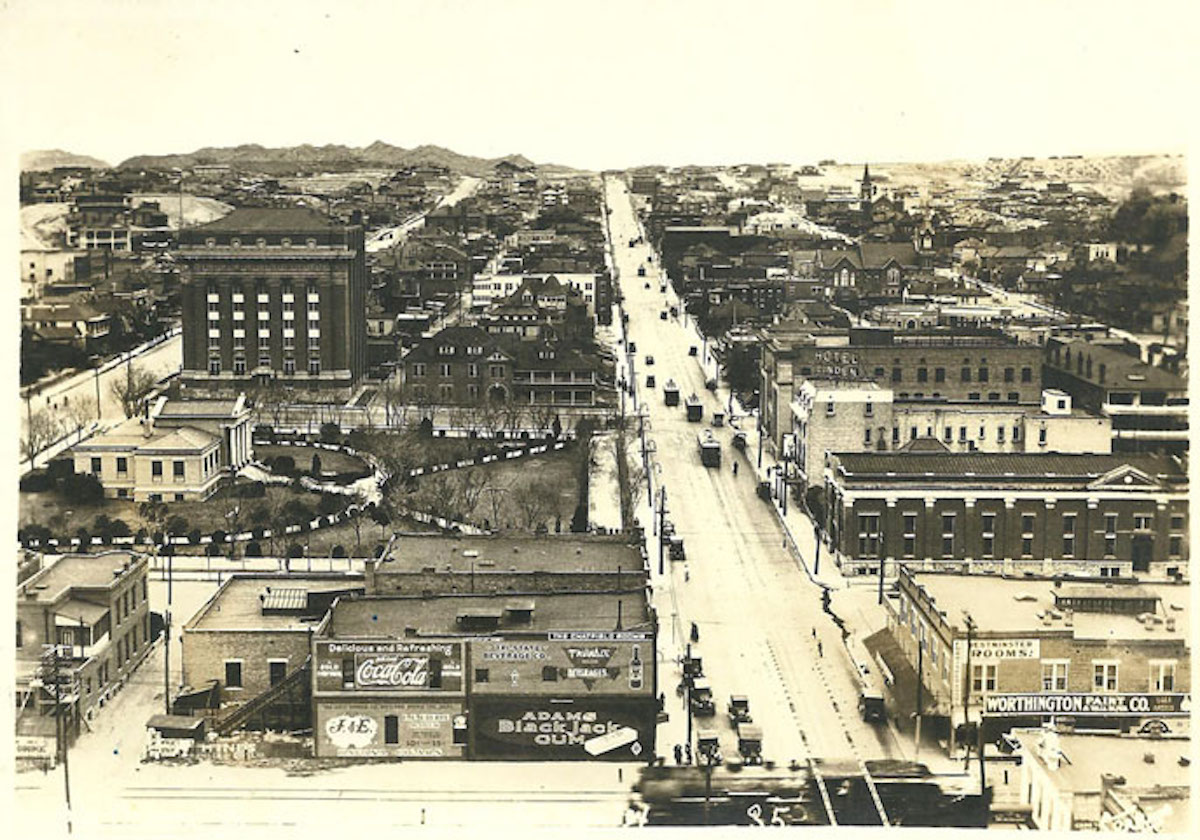 Streetcars in operation along Oregon Street, c. 1910, public domain archival image
Streetcars in operation along Oregon Street, c. 1910, public domain archival image
Served early on by two separate rail bridge connections across the Rio Grande, the addition of electric streetcar service boosted the capacity of the El Paso & Juarez Streetcar Line to ferry passengers back and forth between the United Stated and Mexico. Before long, the twin international border crossings became a perpetual scene of high volumes of pedestrian, streetcar, and automobile traffic, keeping border officials on heavy active duty nearly all hours of the day.
 International Bridge between El Paso, Texas, and Juarez, Mexico, c. 1920, public domain archival image
International Bridge between El Paso, Texas, and Juarez, Mexico, c. 1920, public domain archival image
While the operation of the El Paso Railway Company continued to flourish well into twentieth century, by the 1940s, ridership on all but the El Paso & Juarez Line had begun to dwindle, a victim of the rise of the automobile and shifting demographic and urban patterns. While the majority of the network began to be phased out beginning in the late 1940s, the City of El Paso moved quickly to update its aging streetcar fleet on the El Paso & Juarez Line. They purchased 17 President's Conference Cars (PCCs) from San Diego in 1950, as the Southern California city was in the process of abandoning its light rail service as part of the larger North American-wide trend at the time.
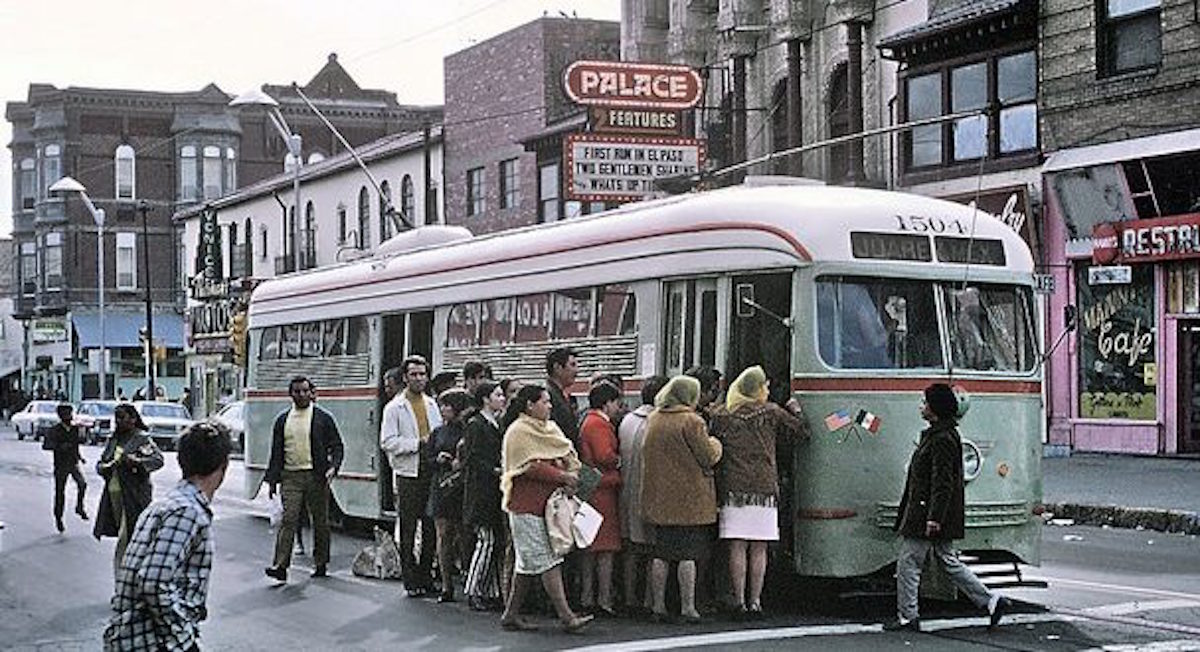 Mexico-bound PCC streetcar, c. 1970, public domain archival image
Mexico-bound PCC streetcar, c. 1970, public domain archival image
Thus from 1950 to the end of all streetcar service in 1974, the El Paso & Juarez Line became one of the last streetcar services in North America, outlasting virtually all but Toronto's famous TTC streetcar network (also running PCCs), which itself narrowly escaped dismissal at roughly the same time. A popular means of transportation for tourists and day-trippers in its final years, both for Americans looking for cheap tequila, cigars, and discounted goods, and for well-to-do Mexicans in search of El Paso's fashionable, brand-name, department store offerings, the service eventually drew the ire of local Juarez shopkeepers, who believed they were on the wrong side of a lopsided system of economic exchange. Feeling that they were losing out on local would-be customers who would rather spend their pesos in the boutiques of downtown El Paso than the shops and market squares of Juarez, while receiving only a modest influx of American dollars via the sale of tequila and cheap souvenirs, a group of Mexican toll workers seized a local streetcar in the summer of 1973, demanding the end of the popular service in the name of saving local businesses.
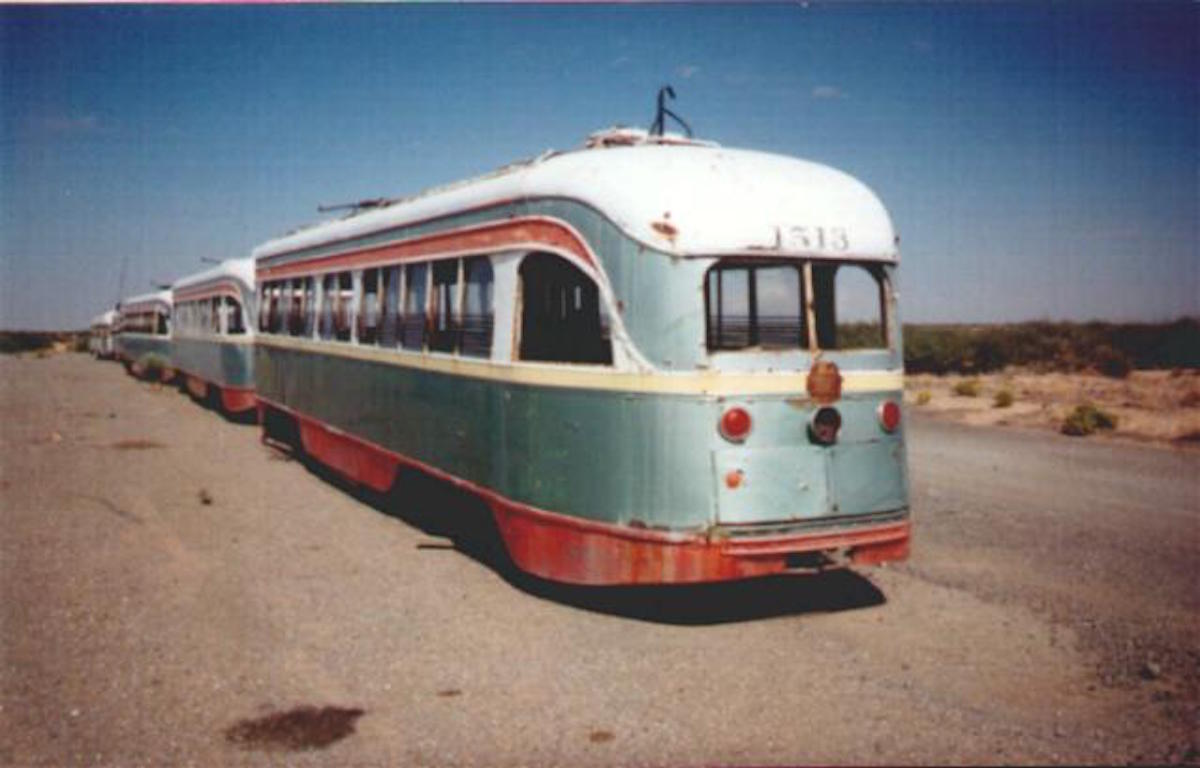 El Paso's PCC fleet left to rust in the desert, c. 1970s, public domain archival image
El Paso's PCC fleet left to rust in the desert, c. 1970s, public domain archival image
Capitulating under pressure from neighbouring Juarez, the City of El Paso brought an end to streetcar service in 1974, citing a host of additional concerns including the future costs of operating the aging fleet, as well as the difficulties inherent to running an international service during a time of increasingly stringent border regulations and protocols. Nonetheless, beginning in 1990, the City of El Paso resurrected trolley service downtown, running a fleet of historic motorized rubber-tire trolleys along a few select routes without tracks or overhead wires until 2000. Though relatively short lived, the re-emergence of streetcars, albeit in an altered form, rekindled local interest in light rail, and the first stirrings of a plan to reintroduce streetcars to downtown El Paso surfacing in the early 2010s.
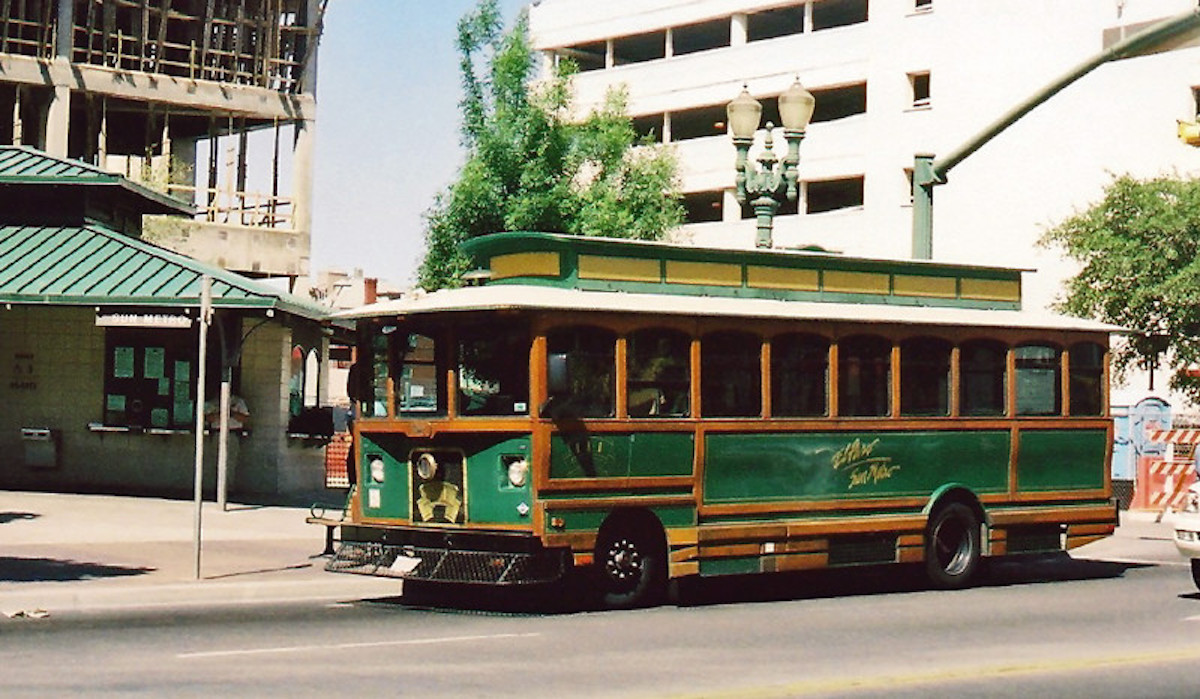 El Paso rubber tire trolley, c. 1990s, public domain archival image
El Paso rubber tire trolley, c. 1990s, public domain archival image
Following a majority vote of support for the project in 2014 from El Paso City Council, The Texas Transportation Commission was given a green light, along with $97 million in funds, to proceed with the restoration and reconstruction of El Paso's long-defunct PCC streetcar fleet, which had been left to rust in the desert since their abandonment in 1974. To consist of six restored original PCCs, and augmented via the construction of a fleet of new retro-style streetcars, the local Sun Metro public transportation outfit will see to the restoration of streetcar service in downtown EL Paso within the next few years.
 El Paso Streetcar Official Route, image via The Texas Transportation Commission
El Paso Streetcar Official Route, image via The Texas Transportation Commission
Seen above, the plan now unfolding on the streets of central El Paso is set for completion in 2018. The laying of track began in early 2016, making it one of the quickest North American implementations of a light rail plan in recent memory. To be comprised of two intertwining routes — seen in the image above as the Uptown Loop in red and the Downtown Loop in green — with a total of five miles (or 8 kilometres) of track, the modern streetcar service will largely replicate the historic network's downtown operations, while leaving the once-central El Paso & Juarez Line out of the picture completely.
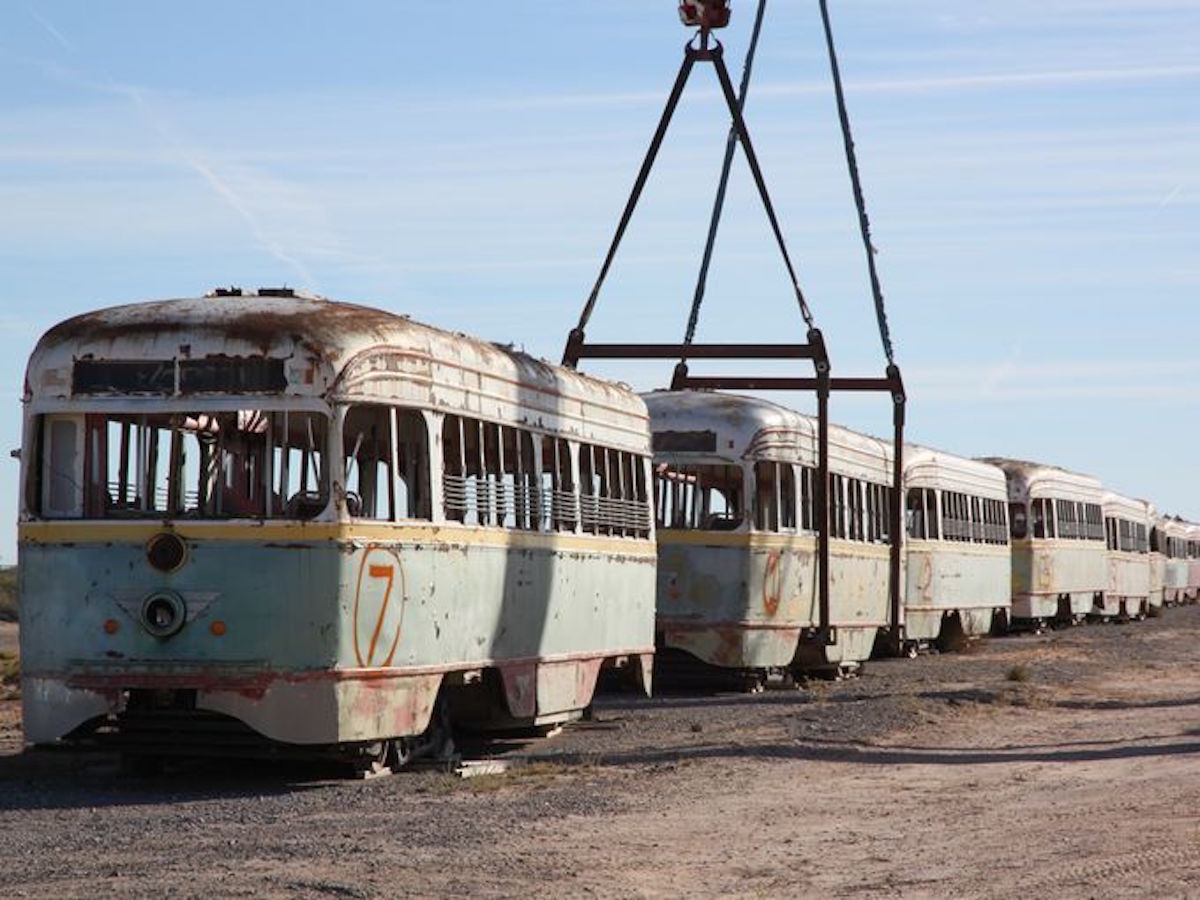 El Paso PCC's being hauled away for restoration, image via the El Paso Times
El Paso PCC's being hauled away for restoration, image via the El Paso Times
The resurrection of El Paso's historic streetcar network, complete with the restoration of several old PCCs, marks an exciting triumph within the expanding realm of what has become something of a light rail renaissance in North America over the last decade. With other cities taking heed of El Paso and other similar cities' return to streetcar and LRT networks, and with countless public transportation enthusiasts and boosters watching each subsequent example with baited breath, it will hopefully only be a matter of time before what is being accomplished in El Paso becomes more and more commonplace across the continent.
SkyriseCities will return soon with a new edition of Once Upon a Tram, which will take an in-depth look at the transit legacy of a city near you. In the meantime, feel free to join the conversation in the comments section below. Got an idea for this series? Let us know!

 11K
11K 












